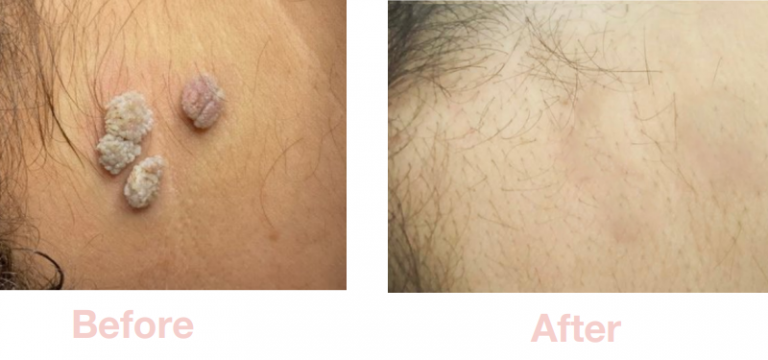Our next post in the series examining the most common temporary methods of hair removal used by millions of women around the globe and how this can lead to the exacerbation of an already troublesome condition.
Today we will look at another one of the popular temporary methods of hair removal for women – waxing. Despite the pain involved with waxing, it remains one of the most common methods used today.
Waxing
Many women use waxing as one of the temporary methods of hair removal to treat large areas of unwanted hair growth. It is fast and instantly effective, albeit eye-wateringly painful. Wax is available in strips to use at home, or is administered by brush in a salon and removed in sections.
What is not commonly discussed, however, is that waxing removes all the hairs, not only the superfluous, unwanted hair. This results in the fine, downy hairs being torn out of the skin at the same time.
If you read our previous post in our series examining the temporary methods of hair removal regarding plucking, you will recall that damage is caused to both the lower follicle and the skin surface when the hairs are torn out. The same effects are caused by waxing.
This one of the temporary methods of hair removal is therefore never recommended for facial hair removal. Waxing can produce disasterous results on the face. The growth of facial hair is governed by hormonal control and after waxing, the damaged follicles surge with blood to repair themselves – the body’s natural defence mechanism. As the blood carries circulating hormones, it is inevitable that all the follicles will heal to produce stronger, thicker and coarser hair, which includes the follicles that previously produced the fine, downy hair that posed no problem. The recipient of waxing will then find she has a far greater problem than she had before, requiring further waxing a few weeks later – and so the cycle begins again.
Such areas of sensitive, delicate skin can be prone to damage from the harsh action of waxing. As with other temporary methods of hair removal, the process of waxing needs to be repeated on a regular basis, which eventually will cause irritation and dry skin conditions – not to mention severe cost implications over time.
The only reliable method for 100% permanent hair removal is Electrolysis – clinically proven and recognised by the British Medical Association and the U.S. FDA.
If performed by an experienced and qualified practitioner, electrolysis can bring permanent relief for women struggling with excess, unwanted hair.
Think about waxing again and let us compare it to electrolysis for a moment.
Waxing – one of the most popular, temporary methods of hair removal.
As we all know, the hairs have to grow to a required length of 3-5mm before waxing can be effective. This means that there are periods where you are still coping with the unwanted hair. The pain of waxing can be excruciating and the cost considerable.
- Electrolysis is comfortable – described as a ‘quick warmth’ by recipients.
- Electrolysis offers permanent hair removal.
- Electrolysis is no more expensive than a few professional waxing sessions.
- Electrolysis is suitable for everyone – all skin types and colouring.
- Electrolysis can be performed upon hairs of any length, as the follicle is treated, not the hair.
Before you take a deep breath outside the waxing clinic and ‘brace yourself’ for the pain, consider Electrolysis.
Elaine, at Clinique Matrice, a stylish clinic on the outskirts of Brisbane, brings welcome relief for her ladies. Take advantage of her free consultation and reconsider those painful, temporary hair removal methods – contact her today.

